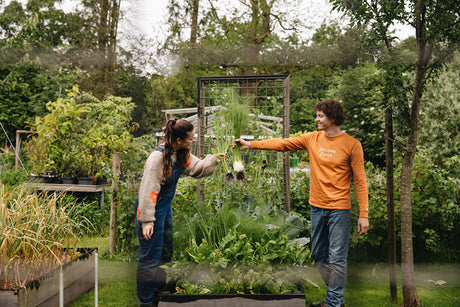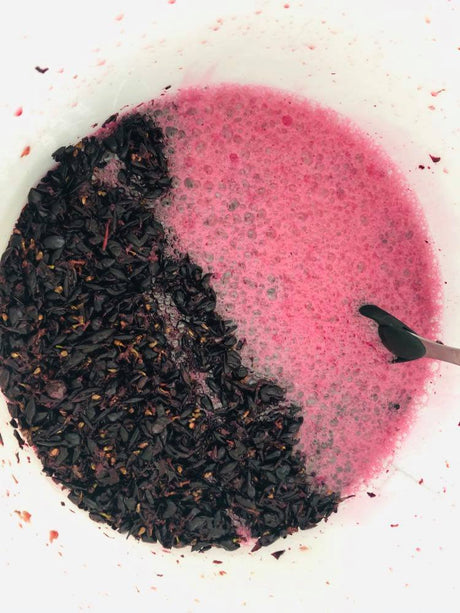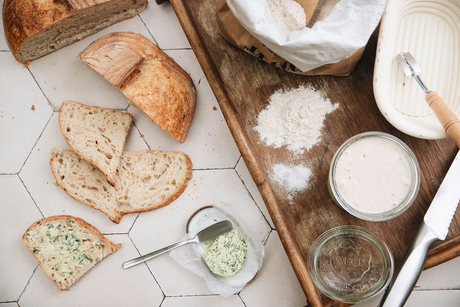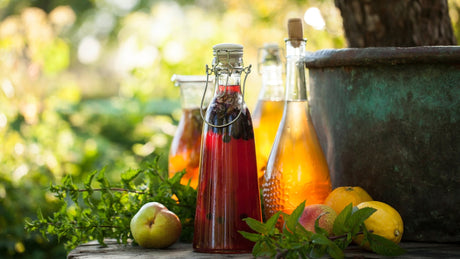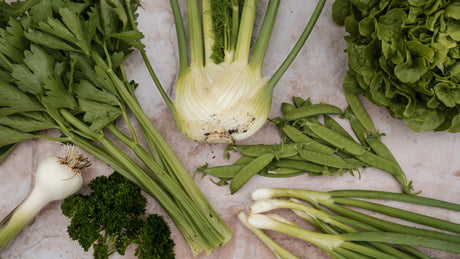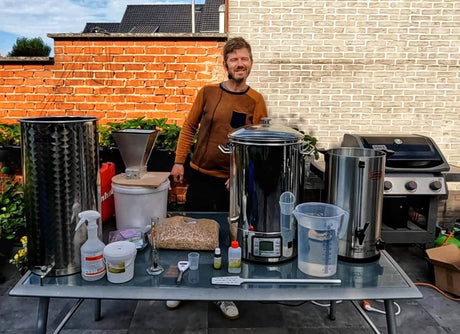Lacto fermentation preserves taste, color, nutritional values and texture

Nowadays we have refrigerators and freezers that store most of our food. It wasn’t always this way. How would our ancestors have stored their food on board? I remember neatly arranged jars on shelves in my grandmother’s basement. My grandfather had a huge vegetable garden that had to feed hungry stomachs. As the harvest date approached, the glass would clatter together in soapy water. My grandmother spent her days cleaning jars, shelling, peeling, cutting and finally sterilizing the vegetables in large glass jars. I still remember the heavy, humid air in the kitchen that at times was full of steam.
When I started my own vegetable garden years later, I was also confronted with the problem of my grandparents. How can I store all the fresh vegetables without them losing their vitamins and their taste or being completely cooked to death? I want to avoid the sterilization process that my grandmother used, because it is not the right storage technique for all vegetables. Some vegetables lose their taste in the water, others change color and still others become mushy. On top of that, not everyone wants to spend hours sterilizing to process kilos of vegetables.

Lacto fermentation produces carbonic acid
I have been racking my brains for a while. I have been looking for a method that preserves the taste, colour and texture. I have come across a method that has been used by mankind for thousands of years but has been forgotten in our regions and is hardly used anymore, lacto-fermentation. I would like to reassure people who are intolerant or allergic to lactose or casein. In this preservation process there is no presence of milk or lactose. It is only an acid that is separated during the fermentation process. The example of lacto-fermentation that everyone knows is sauerkraut, 'choucroute' in French.
Lacto-fermentation involves coating food (whether it’s meat, vegetables, or herbs) in salt or soaking it in brine, all shielded from oxygen. Fermentation starts quickly thanks to microbial (tiny) activity, producing lactic acid, carbon dioxide (like in soda water), and other enzymes. You can tell if your fermentation is working when bubbles form at the top of your jars.
At a certain point, the microclimate stabilizes and fermentation stops. After fermentation, you can store the food for years at room temperature. This storage method preserves the nutrients and therefore the nutritional value.

The classic: sauerkraut
Instructions for use
Material
- Sterilizing jars with sealing rubber, glass lid and sealing iron
- Well-sealed glass jars with a metal lid (jam jar type)
Ingredients
Water: Use water without chlorine above all. You can use tap water but then it is best to filter it or let the water stand for a few hours without covering it. This allows the chlorine to evaporate.
Salt: Use untreated sea salt. Avoid industrially manufactured salt containing E536, this substance prevents caking in kitchen salt and is not suitable for lacto-fermentation. Check the packaging.

Cucumbers do not always have to be pickled
Then mix 30 grams of salt in 1 liter of water. Make sure the salt is well dissolved. Fill your jars with vegetables, cut or not. You can even combine different vegetables. Then place the jars at room temperature for 7 days and then in a cooler space (e.g. cellar) for 3 weeks. Your vegetables are now ready to eat and will keep for at least 1 year if everything goes well.
Exception:
- For the root vegetables (swede, carrots , parsnips , beetroot , fennel , ...). grate the root vegetables. Mix 10 grams of salt per kilo of vegetables. Fill your jars and press them well to have as little air as possible and close the lid.
Tips:
- Fermented vegetables contain more salt than fresh vegetables, so use them sparingly or mix them with other vegetables such as lettuce or unsalted potatoes .
- Legumes can benefit from a 3-minute blanching. Blanching is a cooking technique in which food, usually vegetables or fruits, is boiled for a short time and then placed in cold water or rinsed in cold water to interrupt the cooking process. Cooling (also called quenching) also helps vegetables retain their color better.
Tasty
 Lacto fermentation produces carbonic acid
Lacto fermentation produces carbonic acid The classic: sauerkraut
The classic: sauerkraut Cucumbers do not always have to be pickled
Cucumbers do not always have to be pickled


